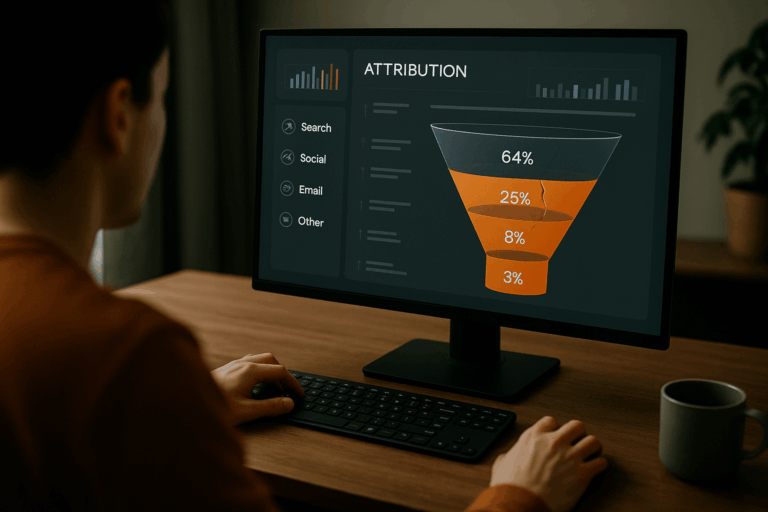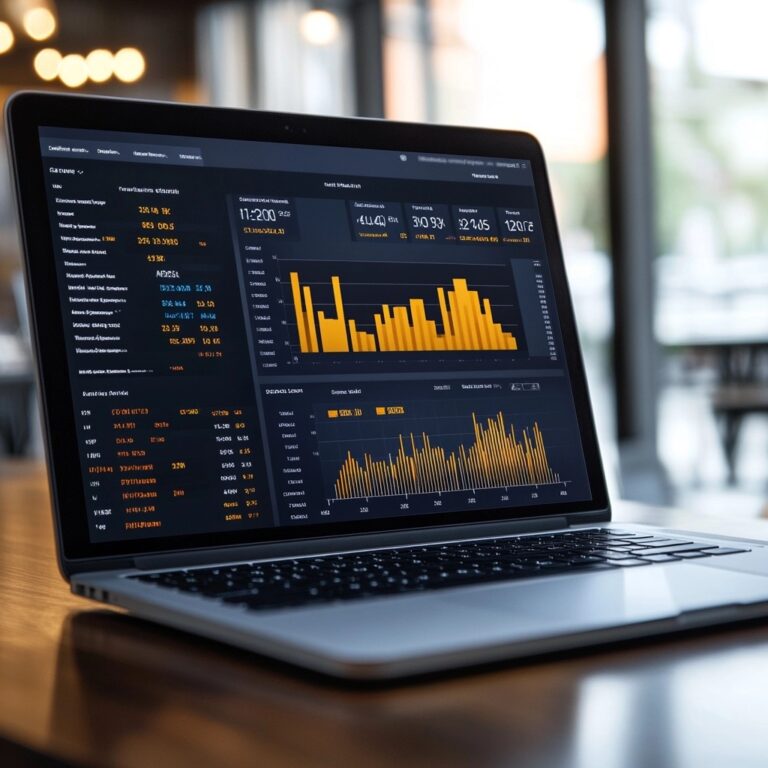Funnel Measurement: From Attribution to Modern Impact Analysis

As marketers, we’re all familiar with the funnel. Customers generally progress from awareness and consideration to conversion and, if we are lucky, loyalty. But the real question is: how do we measure that journey in a way that reflects business reality?
Traditional funnel measurement has relied heavily on attribution software. These tools track clicks, assign credit to touchpoints, and produce dashboards that appear to explain where growth comes from. The problem is that platforms designed attribution to prove their own value, not to measure true incremental impact. If we want to understand which investments actually grow the business, we need to update funnel measurement for the modern era.
What Funnel Measurement Is (and Where It Breaks)
At its core, funnel measurement tracks how prospects move through your sales and marketing cycle. By analyzing the path from awareness to conversion, marketers aim to identify where prospects enter, where they drop off, and what drives them forward. Done well, it highlights opportunities for optimization and more efficient resource allocation.
The problem is that traditional funnel analytics optimize for what is easiest to observe, not what is most meaningful. Most dashboards focus on clicks, last-touch conversions, or campaign ROI as reported inside platforms. These numbers inflate performance because they ignore the baseline: what would have happened without the campaign.
That creates four common problems:
-
Lower-funnel fixation: Dashboards reward the channels closest to conversion, like branded search or retargeting, while undervaluing TOF tactics that actually generate demand.
-
Fragmented customer paths: Shoppers weave across online, offline, and retail channels, yet platform reporting slices the funnel into silos that never add up to a full picture.
-
Credit inflation: Multiple platforms claim the same conversion as their own, creating duplicate “wins” that distort performance.
-
Disconnect from revenue reality: Campaigns can look efficient inside attribution tools, but show little evidence of driving incremental business growth when tested against a true baseline.
Why Attribution Alone Doesn’t Work
Attribution models attempt to assign credit within the funnel using first-touch, last-touch, or multi-touch logic. But all of them share the same blind spot: they cannot separate correlation from causality.
-
First-touch gives 100 percent of credit to the first click, ignoring the rest of the journey.
-
Last-touch assigns all credit to the final action before purchase, which is why branded search and retargeting always look strong from a conversion rate and ROAS standpoint.
-
Multi-touch spreads credit across interactions but still assumes every observed touchpoint caused the outcome.
The truth is that attribution can tell you who touched the funnel, but not who grew the funnel.
Modern Funnel Measurement: Evolving Beyond Attribution
Traditional funnel metrics lean heavily on what’s easiest to observe: impressions, clicks, conversions. Those numbers may show movement through the funnel, but they rarely prove whether marketing spend created growth. That’s where modern funnel measurement comes in. Instead of stopping at attribution, marketers can layer more rigorous methods to connect marketing activity with business outcomes.
At fusepoint, we replace attribution-based funnel analysis with a contribution-first approach:
-
Marketing Mix Modeling (MMM): Build long-term, funnel-wide contribution models that control for external factors like seasonality, competitor activity, and economic shifts.
-
Incrementality Testing (Holdout & Growth Tests): Measure causal lift by comparing test vs. control groups across funnel stages, often referred to as a matched market test.
This lets us calculate a key metric called iROAS (incremental Return on Ad Spend) and prove which funnel stages actually deliver growth.
The Funnel Fallacy: Why Attribution Models Miss the Mark
Attribution models were built for a world of single-channel funnels. Today’s marketing funnels span dozens of touchpoints, multiple funders, and different sectors. Customers don’t follow linear steps, they bounce across YouTube, TikTok, search, retail, affiliate, etc.
Attribution assumes a direct causal link between a funnel step and a sale. Contribution recognizes multiple factors, interaction effects, and external influences.
This shift mirrors the evolution of funnel analytics in finance: investors don’t just look at gross return, they break it down into allocation effects, selection effects, and active return. In marketing, the same applies: you can’t optimize what you can’t measure causally.
How Brands Can Evolve Their Funnel-Level Understanding
As networks expand and become more complex, every marketer faces an ever tougher task: slicing through the noise. Grasping the importance of influence and the subtle interplay between attribution methods goes a long way.
Brands must also consider the intricacy of the modern customer journey. Rarely, if ever, does one point of contact catalyze a sale. People encounter YouTube ads, in-person displays, and influencer content alike. The decision to buy often emerges from this convergence.
If you want your funnel-level understanding to result in deeper insights for your marketing efforts, you need responsive tools. At fusepoint, we provide them. Let our precision measurement and expert analysis help you make better data-driven decisions today.
Our Editorial Standards
Reviewed for Accuracy
Every piece is fact-checked for precision.
Up-to-Date Research
We reflect the latest trends and insights.
Credible References
Backed by trusted industry sources.
Actionable & Insight-Driven
Strategic takeaways for real results.





















